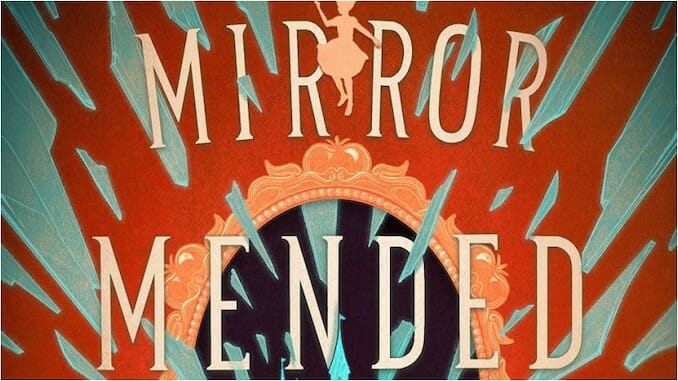A Mirror Mended: Alix E. Harrow’s Fractured Fairytales Series Remains Delightful

Fairytale retellings are all the rage right now, but at this point, there are so many new versions of Beauty and the Beast and Cinderella that it can feel difficult to know where to start. Enter Alix E. Harrow. Author of such richly textured stories as Ten Thousand Doors of January and The Once and Future Witches, Harrow has already proven herself a deft and thoughtful storyteller with an easy grasp on blending times and timelines to create something multi-layered and magical.
Her “Fractured Fairytales” series of novellas are basically hyper-distilled versions of everything that makes her writing great: full of rich character arcs and entertaining pop-culture references, all perfectly sized to be devoured in a single sitting. Fast-paced, snarky, and utterly charming, Harrow’s series of feminist retellings are an all-around breath of fresh air, a sort of fairytale version of Into the Spiderverse that acknowledges various forms of the original stories alongside their subsequent more modern or familiar versions.
A Spindle Splintered reimagined the tale of Sleeping Beauty as a story of empowerment and collaboration which gave the original’s often passive princess the agency she so often lacks. A Mirror Mended offers a similar treatment to the story of Snow White, focusing on that tale’s Evil Queen, a woman, it should be noted who doesn’t even get a name of her own in the original version.
Picking up five years after the events of A Spindle Splintered, we find Zinnia Gray, former Sleeping Beauty stand-in turned damsel rescuer who’s been steadily jumping through different versions of her own tale to free the eponymous princesses from the destinies of eternal slumber and enforced marriage. But at the end of her most recent rescue, she’s pulled into what is essentially a fairytale multiverse, crossing over into a different tale entirely: “Snow White”, where she learns she has been essentially kidnapped by a villain in search of her own happy ending.
Zinnia knows how this story is supposed to end—how all fairytales are meant to end for the largely nameless Big Bads who drive their heroines’ narratives forward. But the Evil Queen, whom Zinnia dubs Eva for the ease of simply having something to call her, has other ideas and very much doesn’t want to dance herself to death in hot iron shoes, fall off a cliff, or live forever in ugliness and misery. (Which is how her tale ends in several of the more popular versions of Snow White.)
-

-

-

-

-

-

-

-

-

-

-

-

-

-

-

-

-

-

-

-

-

-

-

-

-

-

-

-

-

-

-

-

-

-

-

-

-

-

-

-








































